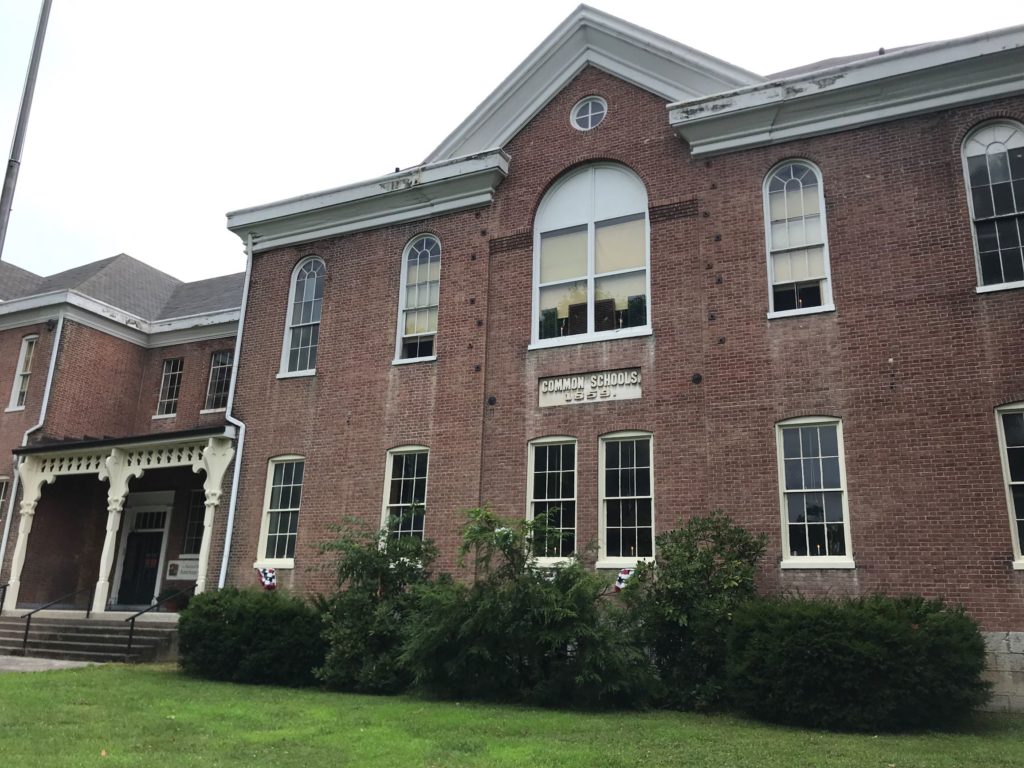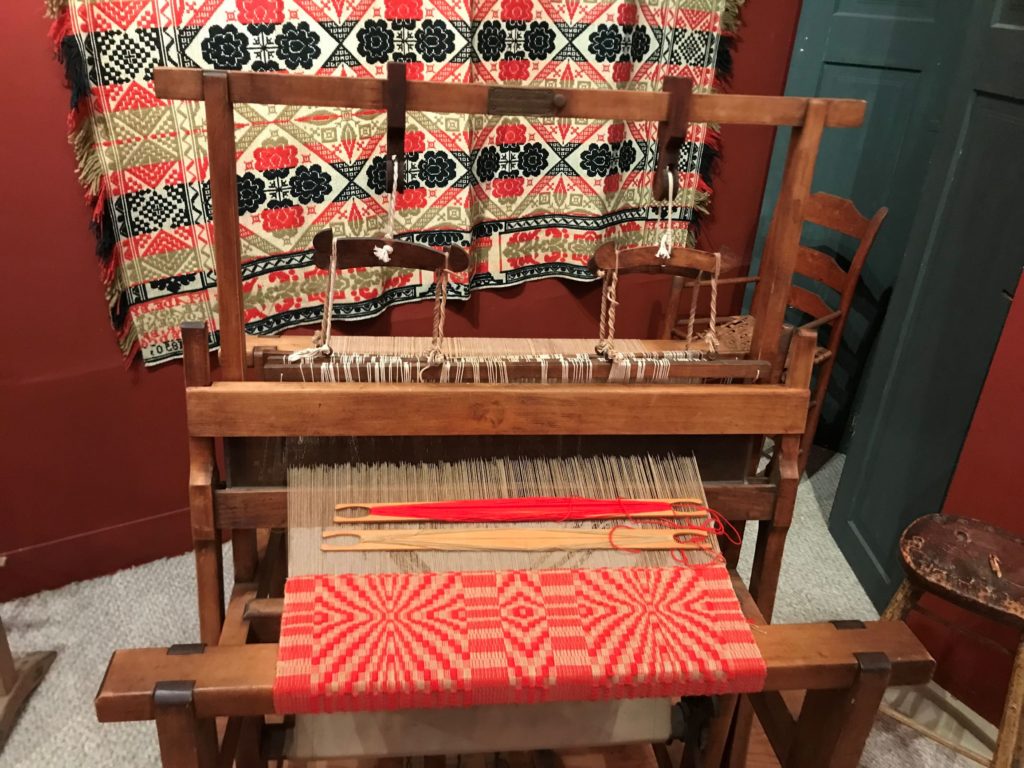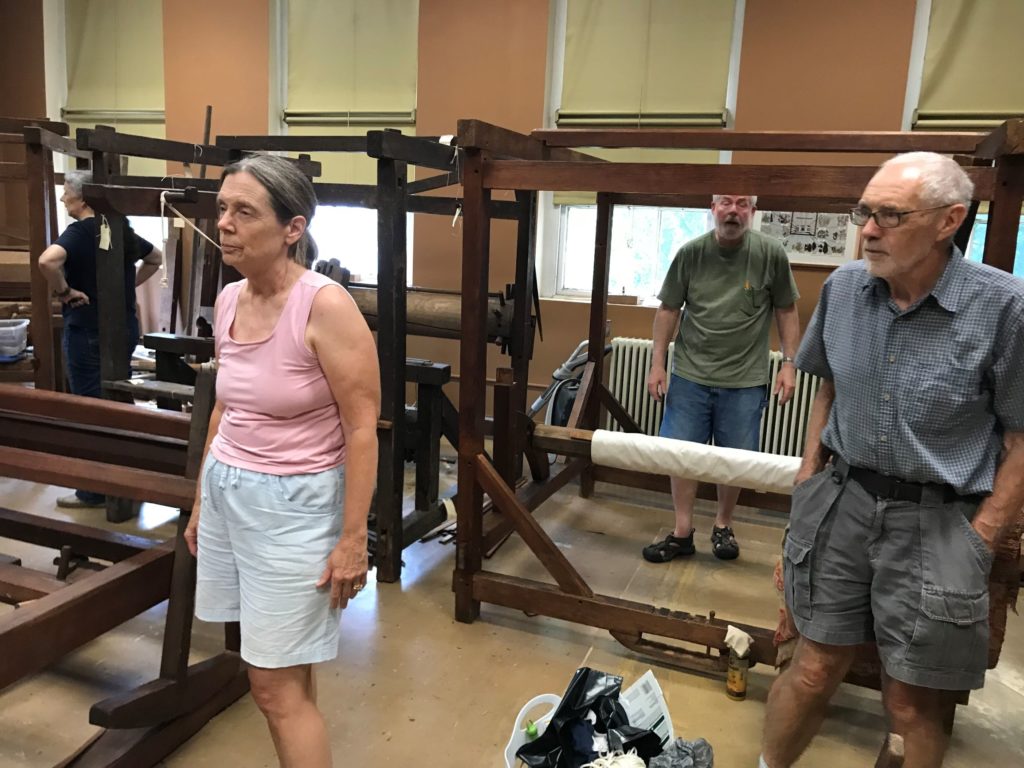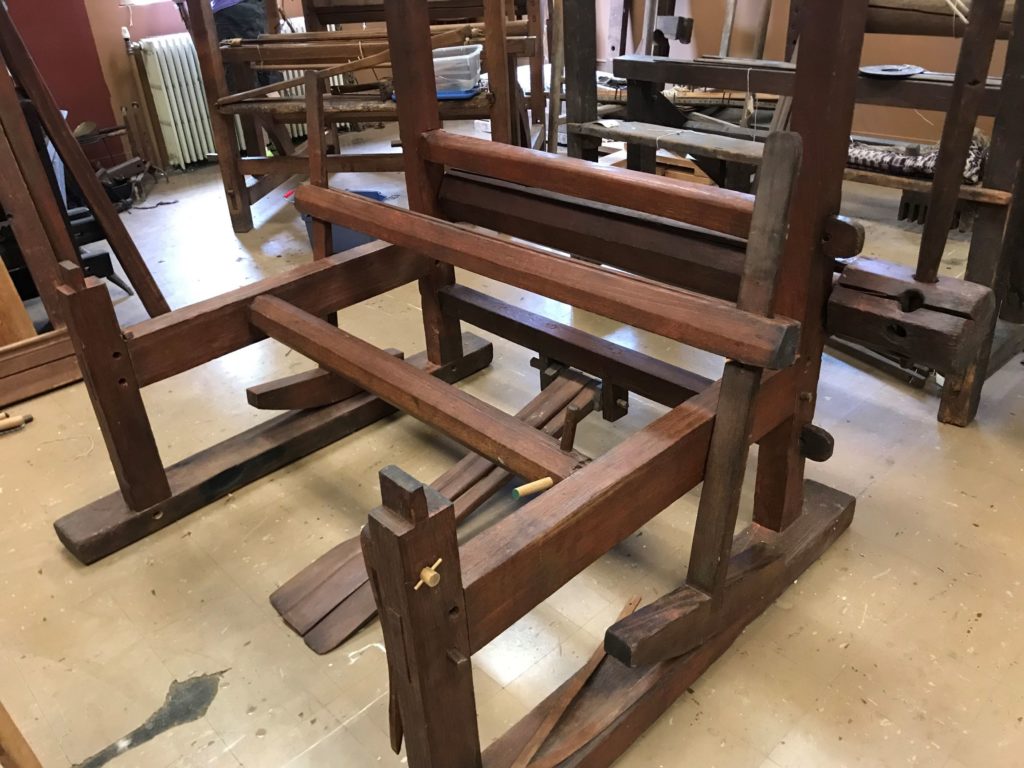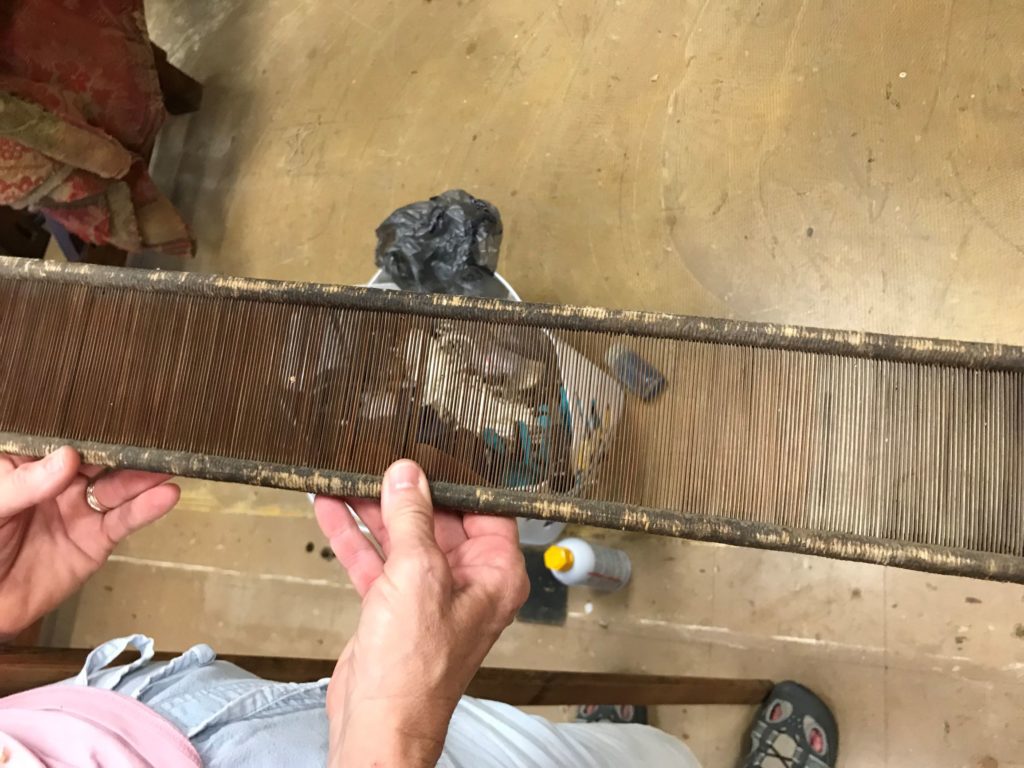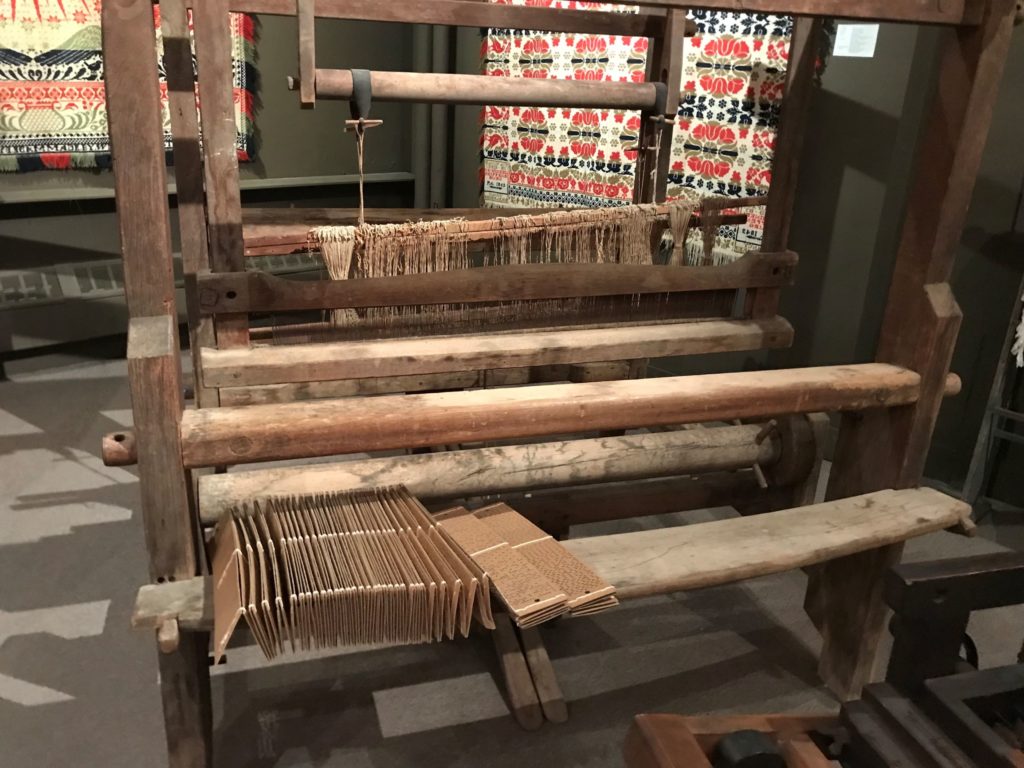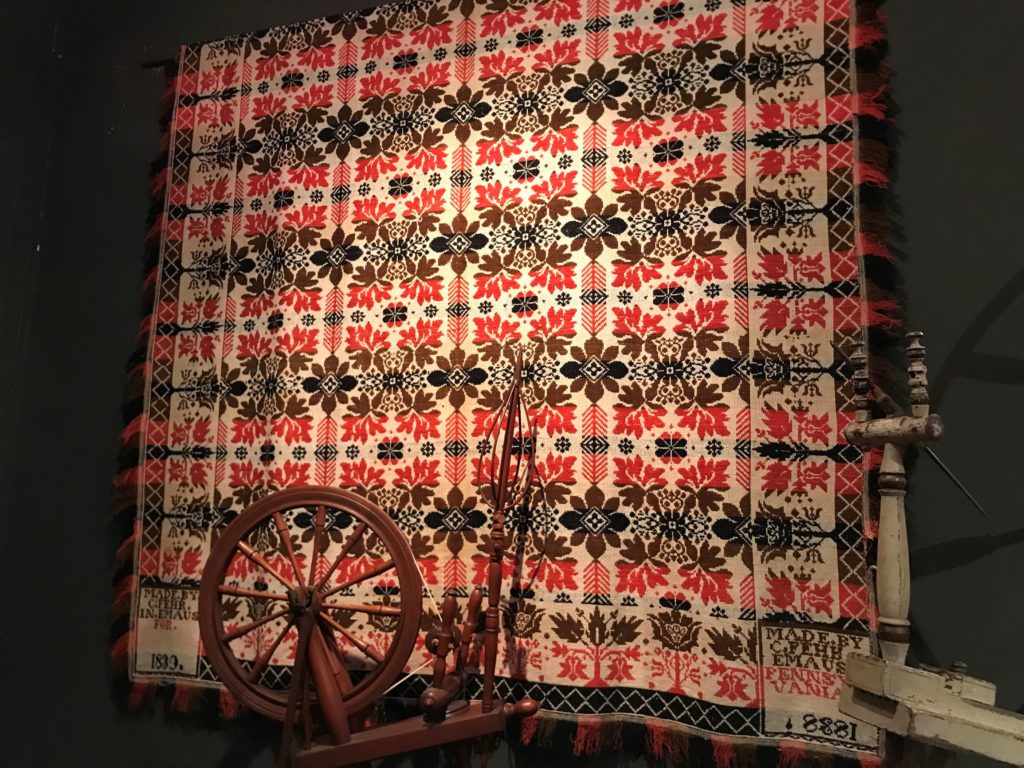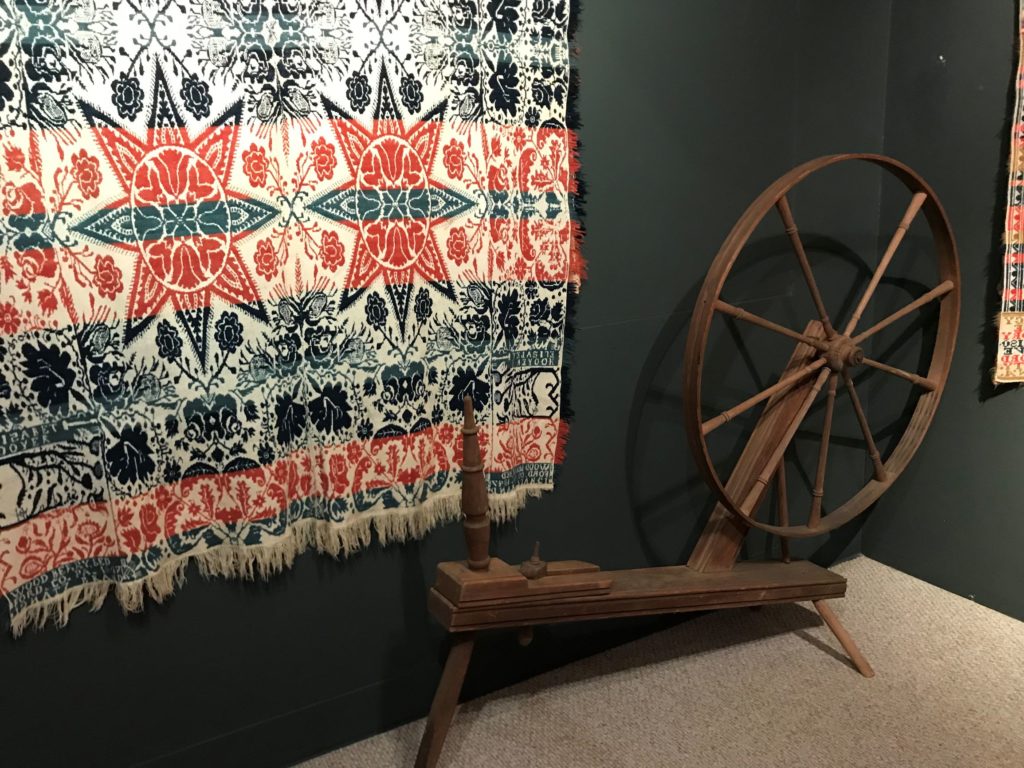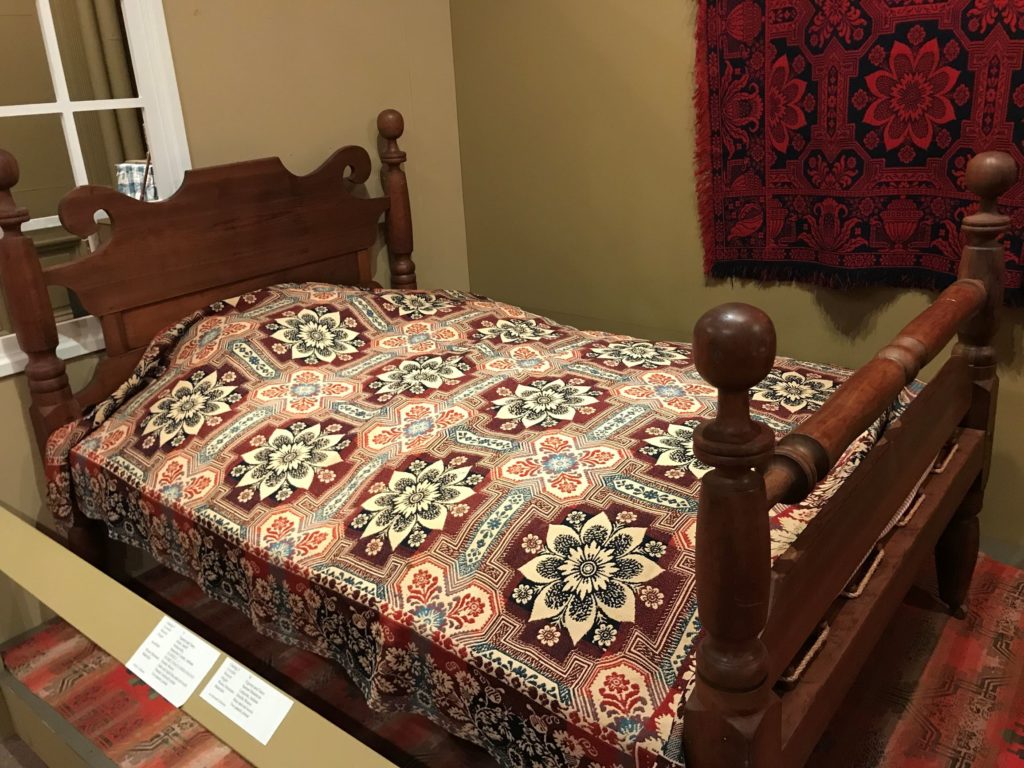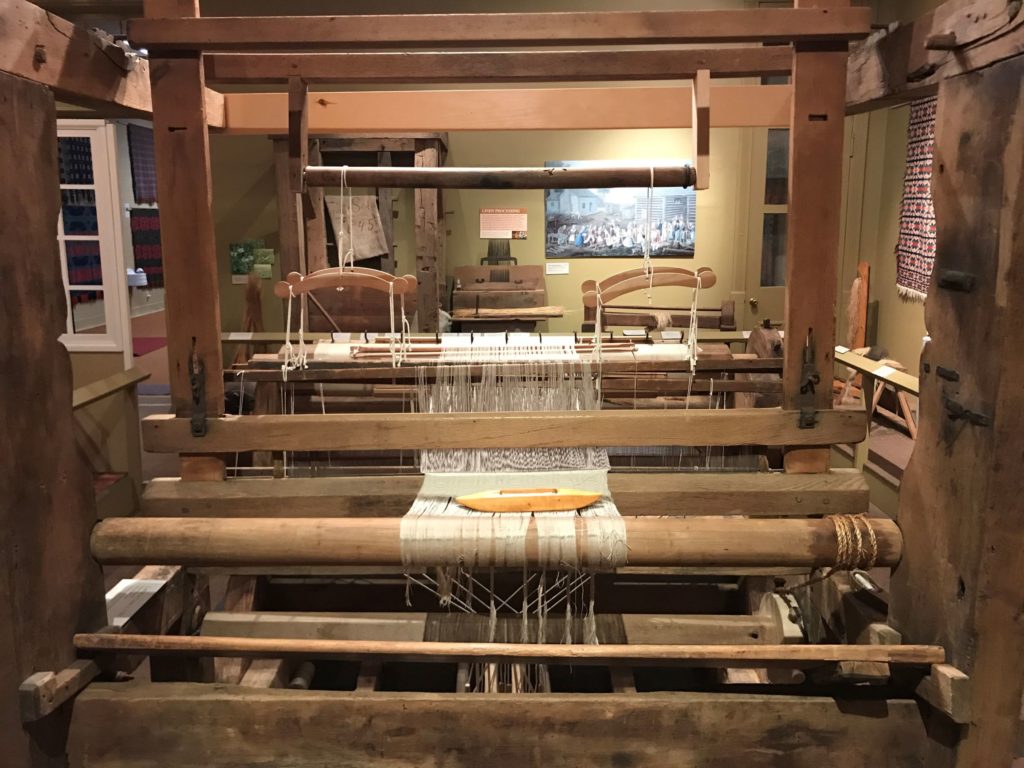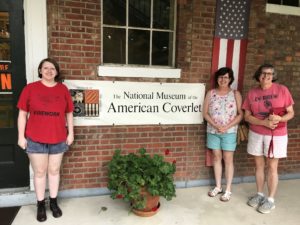 My niece, Grace, is interested in historic clothing and textiles, as am I. When her family came to visit, it seemed natural that we would check out some historic textiles. So we traveled to Bedford, Pennsylvania to see the National Museum of the American Coverlet.
My niece, Grace, is interested in historic clothing and textiles, as am I. When her family came to visit, it seemed natural that we would check out some historic textiles. So we traveled to Bedford, Pennsylvania to see the National Museum of the American Coverlet.
Everything that is preserved is preserved because someone cared passionately about it. Every national park site, every museum, every historical item. The National Museum of the American Coverlet is no different. Twenty years ago Laszlo and Melinda Zonger were so passionate about American Coverlets that they started a nonprofit foundation to establish a museum for them. They started a non-profit organization, brought others with a passion for coverlets on board, and raised money. The town of Bedford, Pennsylvania donated an 1859 school house to house the museum. The Zongers donated their collection of coverlets and other people did the same. In addition they collected looms and spinning wheels.
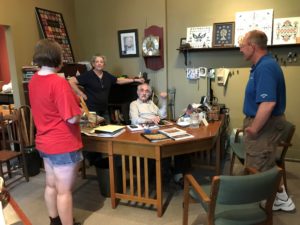
Today the National Museum of the American Coverlet is set up on the first floor of the historic school house. Before we went in to the museum we had a lecture on the history of American Coverlets by Laszlo Zonger himself. The American Coverlet is a woven art form that predominated from 1770 until 1870 only in the United States. Coverlets are woven bedspreads with beautiful designs. Coverlets declined in popularity when manufactured cotton cloth became readily available after the Civil War. Quilts became the artistic expression of choice at that point.
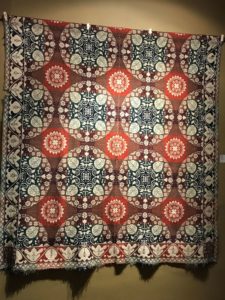 The earliest designs (before 1830) are geometric, with striking colors and shapes. In 1804 Joseph Marie Jacquard invented the Jacquard Loom, which allowed weaving patterns to be much more intricate. Weavers in Pennsylvania, New York, and Ohio bought the looms and made gorgeous, intricately patterned coverlets with them. The looms cost as much as a farm, so buying one was an investment for a professional weaver. With the Jacquard loom, a weaver could produce custom, one of a kind coverlets, for buyers.
The earliest designs (before 1830) are geometric, with striking colors and shapes. In 1804 Joseph Marie Jacquard invented the Jacquard Loom, which allowed weaving patterns to be much more intricate. Weavers in Pennsylvania, New York, and Ohio bought the looms and made gorgeous, intricately patterned coverlets with them. The looms cost as much as a farm, so buying one was an investment for a professional weaver. With the Jacquard loom, a weaver could produce custom, one of a kind coverlets, for buyers.
Laszlo explained the difference between an American coverlet woven by a German weaver and one woven by a British weaver. German patterns are more colorful and always have a fringe. British coverlets use just two colors – one for warp and one for weft – and do not have a fringe. We were especially interested in this distinction because my dad has a coverlet woven in 1844 for his great-grandmother Sarah Lauck. It is very colorful with a fringe and has the name of the weaver, the place, the date, and his great-grandmother’s name woven in.
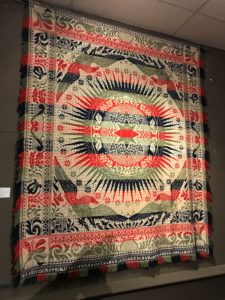
After listening to the lecture, we explored the museum. The beautiful coverlets on display absolutely blew us away. Even with the aid of the punch cards from the Jacquard loom, each coverlet represents an incredible amount of work. And each one is unique. They are also reversible, with the reverse coloring on the opposite side.
Just as impressive as the American coverlets was the collection of looms, spinning wheels, and other processing equipment. Each room had at least one floor loom and multiple spinning wheels. One room had a dozen spinning wheels of every shape and size. I wanted more information on the history of the wheels and looms, but was frustrated in that. Maybe the museum will add it eventually.
We ventured into a room where four people were hard at work restoring three old looms that had recently been donated by Tom Knisely. Tom Knisely is my new weaving obsession and I am going to Redstone Glen to take a class with him in October. The four people in the room had pieces of old looms and spinning wheels strewn all over. They were trying to clean, restore, and put together the looms. But there isn’t a pdf to download for instructions, so a lot of it was hit or miss. Most old looms were made by individuals in a location from available pieces of wood. Consequently no two looms are exactly alike. Again, all four of them were passionate about making these old machines come to life again.
The more I learn about historic weaving, the more fascinated I am. The National Museum of the American Coverlet wet my appetite for learning more. I will definitely be going back there again – hopefully taking Mom and Dad and Dad’s coverlet! The museum is open 363 days a year and costs $10 per person.

